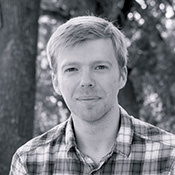
It is difficult to reconcile the shy, insecure, introverted Bruckner with the scope of his large-scale symphonies, which, though mostly scored for the classical instrumentation, nevertheless pack a punch with fortissimo passages for brass and timpani. The Symphony No. 4 in E-flat major, “Romantic,” is no exception. It begins serenely enough with a horn solo against a backdrop of quietly shimmering tremolo strings. As with all Bruckner symphonies and, indeed, all movements of Bruckner symphonies, it builds from there to a series of crescendos and a joyous, rousing conclusion.
It must be noted that the Symphony No. 4 underwent several revisions, many by Bruckner himself, and some by others. The version performed by Dudamel and the LA Phil on Nov. 3 lists 1874 as the composition date with revisions in 1878 and 1880. The original 1874 version has the horn introduction playing piano and the 1878-1880 version has the horn playing mezzo forte. However, a strong case can be made for the piano version, especially as the strings are playing pianississimo (very, very soft). When played in this manner, it gives the impression that the horn is calling from across the mountains and imbues it with a bucolic sense. The quieter version also fits better with the hunting music of the third movement Scherzo with its Trio, which Bruckner described as a dance tune during a lunch break from hunting. One could, however, also make a case for the mezzo forte version because Bruckner described the opening horn call as announcing the day after a full night’s sleep. Of course, it’s all a matter of which version of the symphony one adheres to and one’s preference.
In any case, the horn figures prominently in every movement of the symphony, and Andrew Bain, the LA Phil’s principal horn, certainly earned the much-deserved cheering when he was asked to stand by Dudamel at the conclusion. Bain’s clarion playing was the focal point for each of the movements and in a sense tied them all together.
After a funeral-like second movement and the famous hunting third movement, the finale concludes with a joyous return to the original simple four-note theme played by the entire orchestra.
Dudamel certainly likes to program contemporary music on his concerts, and he promotes young composers (see below), but watching him conduct the Bruckner Fourth, it’s hard to believe that he doesn’t prefer the masters. He conducted with a seriousness of purpose and a determination that came across in the exquisite performance by the Phil. Bruckner’s music moves seamlessly from the simple to the sublime, the latter reflecting his deep religious conviction. Dudamel and the Phil held the audience spellbound for 60 minutes! A definite treat for the Brucknerds in attendance.
Speaking of young composers, the first half of the program was devoted to Andrew Norman’s Sustain, which was commissioned and premiered (and recorded) by Dudamel and the Phil last year. Dudamel — and the Disney Hall audience — must have liked it enough to reprogram it this year. The long, one-movement piece has received rave reviews from the likes of The New York Times and The New Yorker’s Alex Ross who proclaimed that Norman’s composition “may become a modern American classic.”
Although Sustain has its share of dissonances and, at 45 minutes, can be difficult to follow, it does have a discernable structure. As the 39-year-old Norman describes it himself on his website, “Structurally speaking, Sustain is cast in the form of a contracting spiral. It repeats the same music 10 times in a row, each repetition being exponentially faster than the time before.” The piece begins and ends with what Ross calls a “kind of signal: two pianos, tuned a quarter tone apart, arpeggiating upward into silence.” And as Norman writes, the signal occurs eight other times in the music. The overall effect was one of sustain in the strings surrounded by movement in the other instruments.
The Phil is just at home with music like Norman’s as with Bruckner’s and can pull them both off with equal facility and elan as they did so masterfully on Sunday.
—Henry Schlinger, Culture Spot LA
Visit www.laphil.com.





